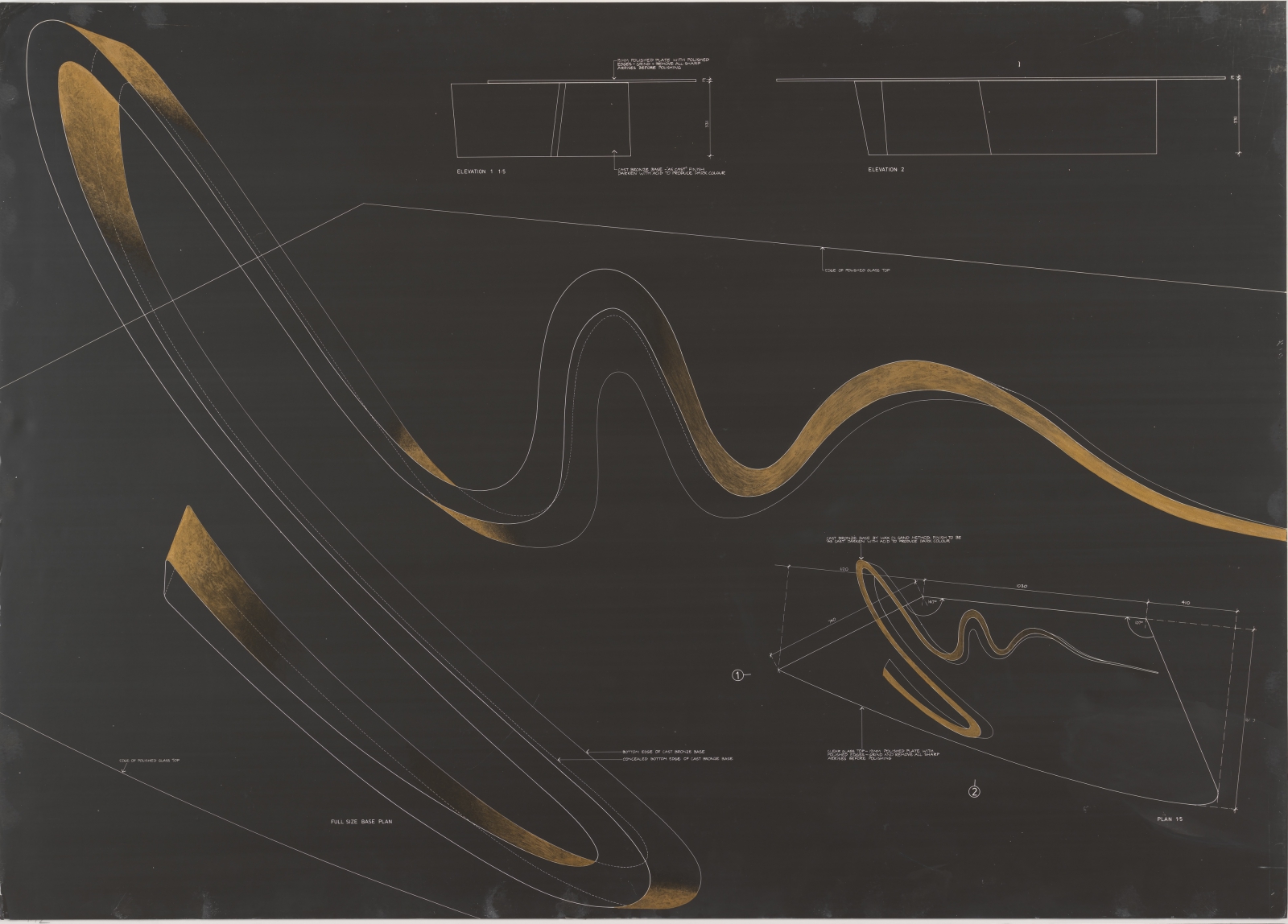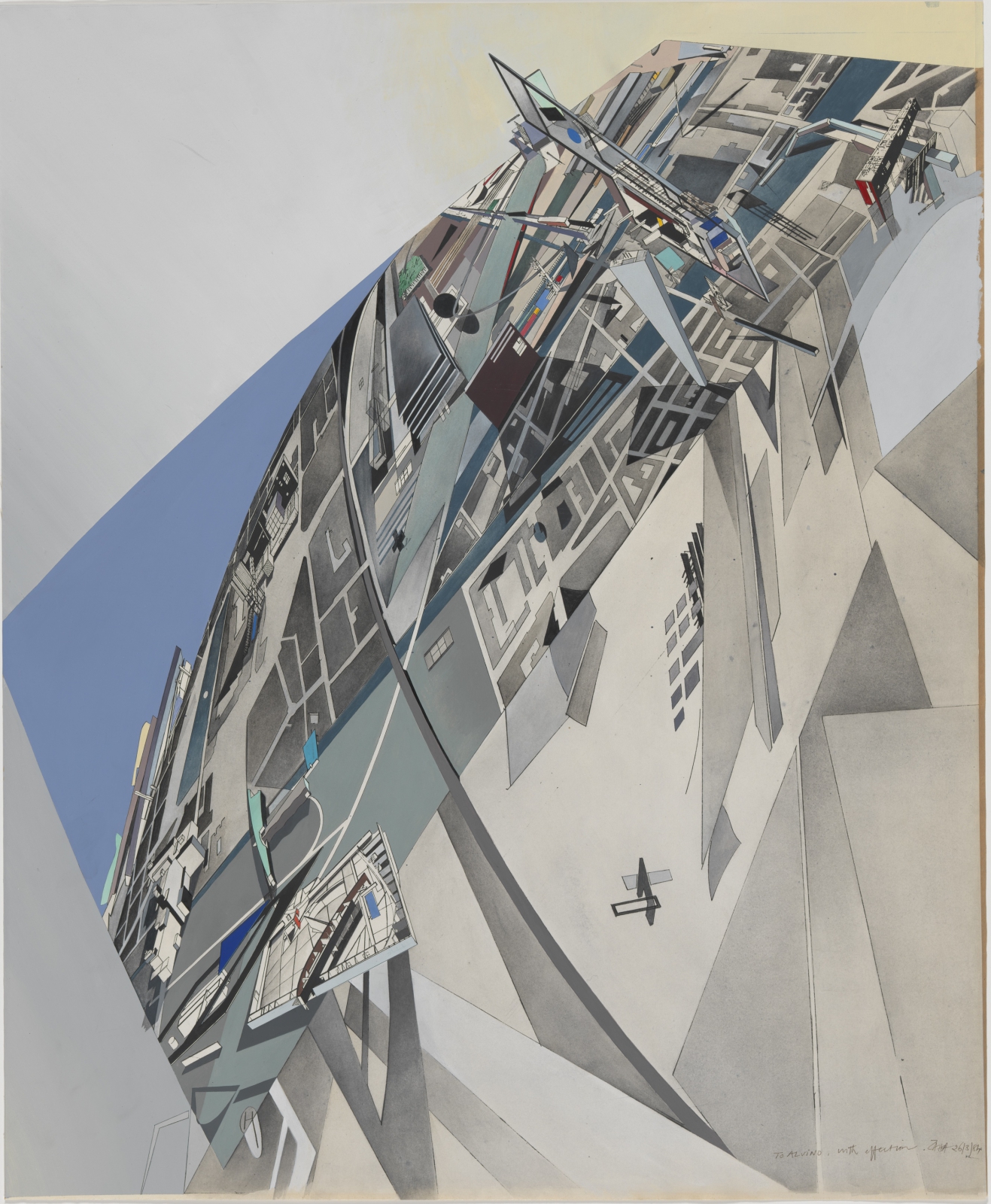
Zaha Hadid, Sperm Table, 1988. © Zaha Hadid. From the Collection of the Alvin Boyarsky Archive.
|
札哈.哈蒂 《精子桌》,1988年 |
Zaha Hadid Sperm Table, 1988 |
這幅圖稿所繪的是札哈.哈蒂為威廉.畢塔爾(William Bitar)的倫敦住所設計的五件家具中的一件,此為她第一件被實際製成的作品。哈蒂曾說《精子桌》是由「一條我畫的彎曲線條發展出來的。」圖面裡的弧形,是用不同曲率半徑的雲形尺繪製而成,這是一種當時用來製圖的基本工具。在圖面右下方有一小幅測繪圖,畫的是精子造型的銅製基座,和不規則型的玻璃頂部。覆蓋在這份比例為1:5的平面圖上,還有另一幅超過紙張本身大小的原尺寸平面示意圖。這幅繪圖將原本只是個閃現的念頭——一條蜿蜒的線——想像成實體家具,由此預示了哈蒂日後遍及全球的建築作品中出現的建造型態。
This drawing is from Zaha Hadid’s first built work—five pieces of furniture for William Bitar’s home in London. Sperm Table “was based on a squiggle I drew,” Hadid stated. The curving shapes were created using French curves with changing radii, tools that were fundamental to drafting at that time. A small measured plan is provided at the bottom-right section for both the sperm-shaped bronze base and an irregular glass top. Overlaying this 1:5 scaled plan is a full-scale planar representation that is not contained within the sheet size. A visualization of a quick initial thought—a squiggle—as a piece of furniture, this drawing anticipates the built forms that would soon surface worldwide in Hadid’s architectural work.

The World (89 Degrees) by Zaha Hadid, Copyright Zaha Hadid Foundation, Courtesy Alvin Boyarsky Archive / Nicholas Boyarsky
|
札哈.哈蒂 《世界(89度)》,1984 |
Zaha Hadid The World (89 Degrees), 1984 |
這是札哈.哈蒂最為人所知的設計圖之一,一開始是畫成測繪圖,接著重新印刷出圖,最後再手工上色,內容則濃縮了她職涯前期和學生時代的多件作品,像是畫面左下角的愛爾蘭總理官邸設計案(Irish prime minister’s residence),這也意味著,從都柏林到倫敦乃至香港,這些地理位置相距遙遠的城市全都匯集在同一幅繪圖裡,《世界》亦代表著日益國際化的建築脈絡,而哈蒂的建築實踐堪稱這種現象的代表之一。
This is one of Zaha Hadid’s best-known drawings, and was originally made as a measured drawing, remade as a print, and later painted by hand. The drawing itself is a collection of miniature reproductions of Hadid’s earlier professional and student projects, including her Irish prime minister’s residence scheme in the lower left. Showing many distant geographical sites in a single drawing—from Dublin and London to Hong Kong—The World also represents an increasingly internationalized architectural culture, with Hadid’s own practice as one of its main expressions.
